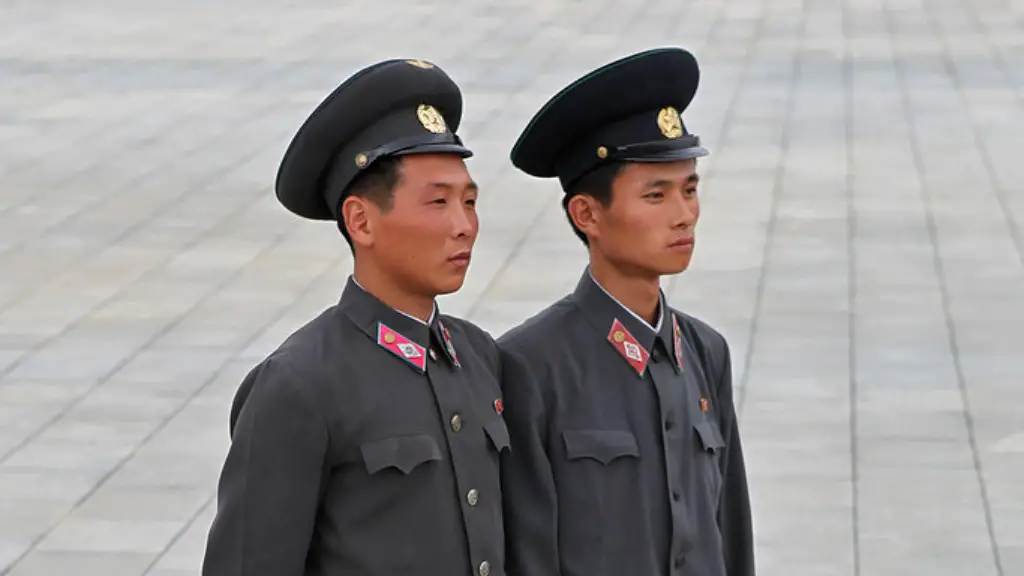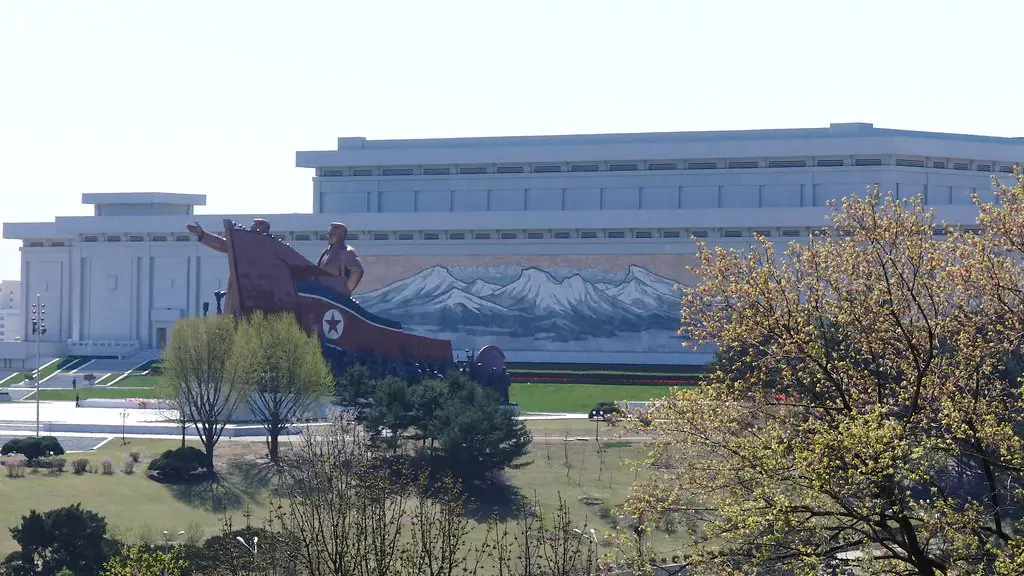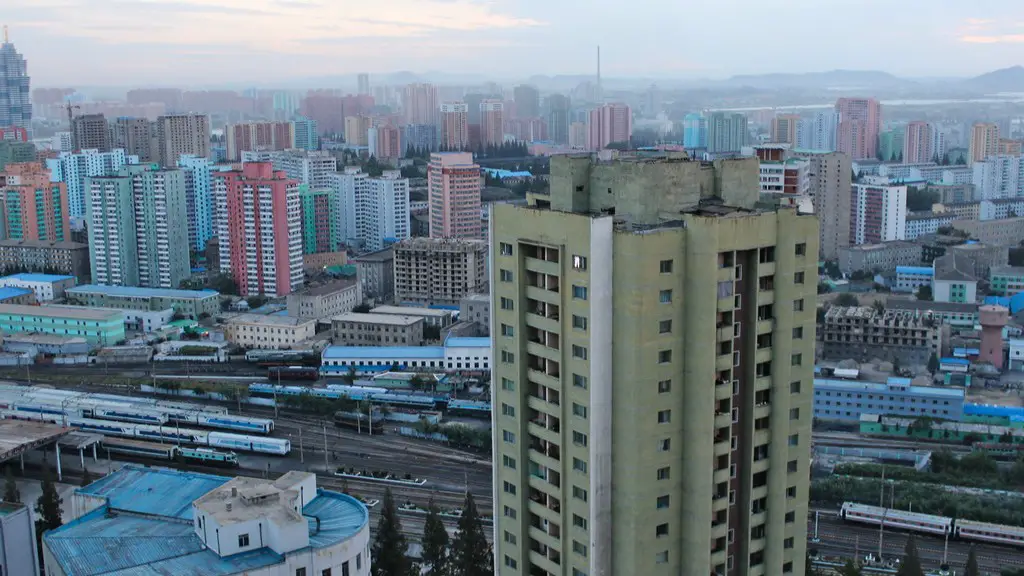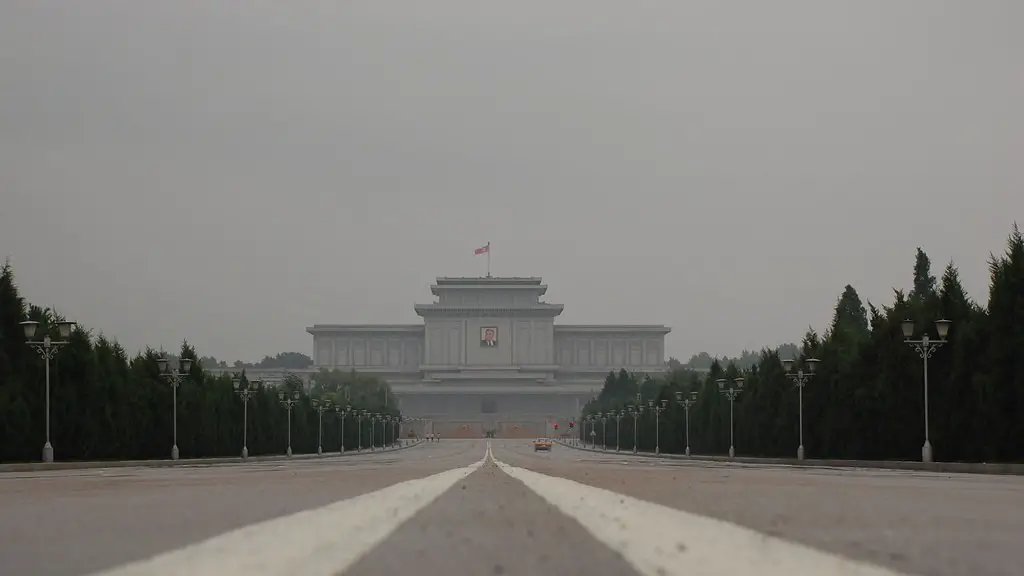In 1945, at the end of World War II, the Korean peninsula was divided between the Soviet Union in the north and the United States in the south. This division was meant to be temporary, but the Cold War soon made it permanent. The Soviet Union installed a communist government in the north, while the United States installed a democratic government in the south.
The two governments quickly became very hostile to each other. In 1950, the North Korean army (backed by the Soviet Union) invaded the South, sparking the Korean War. The war ended in 1953 with an armistice, but the two sides have remained technically at war ever since.
The North Korean government is one of the most repressive and closed off in the world. It is a dictatorship, and the ruling family, the Kims, have maintained their grip on power for three generations. The North Korean people have little contact with the outside world and are kept tightly controlled by the government.
The roots of North Korea’s communism can be traced back to the country’s founder, Kim Il Sung. Sung was a Marxist-Leninist who was deeply influenced by the Soviet Union. After World War II, North Korea was occupied by Soviet troops, and Sung was installed as the leader of the country. Under Sung’s rule, North Korea adopted a communist system of government and economy. North Korea remained closely aligned with the Soviet Union until the early 1990s, when the Soviet Union collapsed. Since then, North Korea has been increasingly isolated from the rest of the world.
What was a main reason that North Korea formed a communist government?
North Korea was heavily influenced by the Soviet Union and China when it comes to their government and political ideology. The Soviet Union was a communist state, and China was in the midst of its communist revolution led by Mao Zedong. North Korea saw these two communist states as model examples to follow, and so they formed their own communist government.
Kim Il-sung was a Korean politician and the founder of North Korea. He was born in 1912 and died in 1994. He ruled North Korea from its establishment in 1948 until his death.
When did North Korea fall to communism
The United Nations General Assembly’s acceptance of the report of UNTCOK on 12 December 1948 was a key moment in the history of the Korean peninsula. The declaration that the Republic of Korea was the “only lawful government in Korea” was a direct challenge to the legitimacy of the Communist North Korean regime. This act set the stage for the Korean War, which would eventually lead to the division of the peninsula into two separate states.
As of February 2018, there are five countries that are called communist states They are China, Cuba, Laos, Vietnam and North Korea. North Korea does not follow Marxism–Leninism but rather the ideology of Juche.
Why is North Korea still communist?
Since the end of economic aid from the Soviet Union after its dissolution in 1991, North Korea has continued to nominally uphold Communism, but has replaced it with a policy of self-reliance. This has led to years of economic slowdown in the 1980s and receding during the 1990s.
The 1931 Japanese invasion of Manchuria led to the eventual communist overthrow of China in 1949. For years, the Nationalist government of Chiang Kai Shek had worked to suppress rebellions by the Chinese Communist Party (CCP). However, the Japanese invasion created a power vacuum in China that the CCP was able to exploit. The CCP gradually gained control of China and eventually overthrew the Nationalist government.
Why did China fight with North Korea?
The Chinese intervention in the Korean War was a response to the US-led UN forces crossing the 38th parallel and advancing into North Korea. The Chinese saw this as a threat to their security and intervened in order to prevent a US invasion of Chinese territory. The Chinese intervention led to a series of military setbacks for the UN forces and eventually resulted in a stalemate.
The Korean War was a conflict between North and South Korea, in which the United States came to the aid of the South. The war began in June 1950, when North Korea invaded South Korea. The United Nations force, led by the United States, fought back, but the Chinese entered the war in November 1950 and unleashed a massive ground attack against the UN forces. The war ended in 1953, with an armistice between North and South Korea.
The main difference between communism and socialism is that under communism, most property and economic resources are owned and controlled by the state, while under socialism, all citizens share equally in economic resources as allocated by a democratically-elected government.
Mikhail Gorbachev’s decision to remove the constitutional role of the Communist Party in 1991 allowed for non-communists to take power. As a result of this change, Boris Yeltsin became the first president of Russia. The consequences of Gorbachev’s decision were far-reaching and had a significant impact on the course of Russian history.
What is the basic idea of communism?
Communism is a left-wing to far-left socio-political, philosophical, and economic ideology. The goal of communism is the establishment of a communist society, which is a socioeconomic order centered around common ownership of the means of production, distribution, and exchange.
The communist movement has its roots in the Industrial Revolution and the accompanying increase in social inequality. As workers began to organize and agitate for better working conditions and pay, they began to develop a class consciousness and a desire for a society in which all people would be equal.
During the 20th century, there were a number of Communist revolutions, most notably in Russia, China, and Cuba. In each of these cases, the Communist Party came to power and established a one-party state. While there have been significant technological and economic advances under Communist regimes, they have also been characterized by totalitarianism and repression.
Communism is an intriguing ideology that has been gaining traction in recent years. It advocates for a classless society where the means of production are owned communally, which is a refreshing change from the capitalist system that currently dominates the world. Although it has its detractors, communism is an intriguing option for those who are tired of the status quo.
Marxist–Leninist states are those countries that follow the Marxist–Leninist ideology, which is a form of socialism. The most prominent Marxist–Leninist states are China, Cuba, Laos, and Vietnam. These states are characterized by a single-party system, state ownership of the means of production, and a planned economy.
There are many different types of economic systems in the world, but two of the most prominent ones are capitalism and communism. Both of these systems have their own pros and cons, and it’s important to understand the nuances of each before making any decisions about which one is right for you.
At its core, capitalism is an economic system in which the trade and industry of the economy is owned and controlled by private individuals, to make profit. The primary focus of capitalism is on competition and self-interest, and there is little to no government intervention or regulation. This can be good or bad, depending on your perspective. On the one hand, it can lead to innovation and growth, but on the other hand, it can also lead to greed and exploitation.
In contrast, communism refers to social system in which country’s trade and industry are controlled by the community and the share of each individual relies on his ability and needs. The aim of communism is to create a classless society in which everyone is equal and shares the same economic status. This system is often thought of as being the polar opposite of capitalism, but that isn’t necessarily the case. Both systems have their own unique strengths and weaknesses, and it’s important to understand all of them before making
Has China always been a communist country?
The history of the People’s Republic of China (PRC) dates back to 1 October 1949, when the CCP chairman Mao Zedong proclaimed the establishment of the PRC from atop Tiananmen, after a near complete victory by the CCP in the Chinese Civil War. The PRC has undergone numerousInternal struggles and political reformations since its inception, with the most notable being the Cultural Revolution of the 1960s and ’70s. Since the start of economic reforms in 1978, the PRC has become one of the world’s fastest-growing economies and is now the second-largest economy by nominal GDP. The PRC is also a permanent member of the United Nations Security Council and a nuclear power.
The People’s Republic of China (PRC) was established on October 1, 1949, with Chinese Communist leader Mao Zedong as its first leader. The PRC is a single-party state, with the Chinese Communist Party (CCP) as its sole legal party. Under Mao, the CCP pursued a policy of collectivization, which led to the disastrous Great Leap Forward campaign in the late 1950s. In the early 1960s, Mao launched the Cultural Revolution, a campaign to purge the country of capitalist and traditional elements. The Cultural Revolution led to widespread social and economic chaos and millions of deaths.
Since Mao’s death in 1976, the CCP has enacted a series of economic reforms that have transformed China into a major world power. The PRC continues to be an authoritarian state, with the CCP maintaining a tight grip on power. Political dissent is not tolerated, and human rights abuses are common.
When did Russia become communist
Vladimir Lenin, a Marxist, seizes power during Russia’s October Revolution, becoming the first communist government. The Bolsheviks, a political party adhering to Marxism, take control of the government and establish the Soviet Union.
The close ties between Pakistan and China have been praised by both countries for many years. Pakistani President Pervez Musharraf has referred to China as Pakistan’s “time-tested and all-weather friend”, while Chinese leader Hu Jintao has reciprocated by calling Pakistan a “good friend and partner”. These ties between two countries have remained strong despite various challenges and continue to be an important factor in regional stability.
Final Words
The Democratic People’s Republic of Korea, or North Korea, was established as a communist state in 1948. The country had been under Japanese rule since the early 1900s, and after World War II, it was divided into two parts, with the north being occupied by the Soviet Union and the south by the United States. The two sides clashed ideologically, with the Soviets backing the establishment of a communist government in the north and the Americans supporting a democratic government in the south. In 1948, the north held elections and declared itself the Democratic People’s Republic of Korea, with Kim Il-sung as its first leader. The country has been ruled by the Kim family ever since.
After World War II, the Soviet Union installed a communist government in the northern part of Korea, while the United States installed a non-communist government in the southern part. In 1950, North Korea invaded South Korea in an attempt to reunify the country under communism. The invasion led to a three-year war, which ended with an armistice in 1953. North Korea has remained a communist country since the end of the war.





